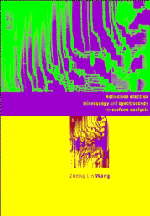Book contents
- Frontmatter
- Contents
- Preface
- Symbols and definitions
- 0 Introduction
- 1 Kinematical electron diffraction
- Part A Diffraction of reflected electrons
- Part B Imaging of reflected electrons
- Part C Inelastic scattering and spectrometry of reflected electrons
- Appendix A Physical constants, electron wavelengths and wave numbers
- Appendix B The crystal inner potential and electron scattering factor
- Appendix C.1 Crystallographic structure systems
- Appendix C.2 A FORTRAN program for calculating crystallographic data
- Appendix D Electron diffraction patterns of several types of crystal structures
- Appendix E.1 A FORTRAN program for single-loss spectra of a thin crystal slab in TEM
- Appendix E.2 A FORTRAN program for single-loss REELS spectra in RHEED
- Appendix E.3 A FORTRAN program for single-loss spectra of parallel-to-surface incident beams
- Appendix E.4 A FORTRAN program for single-loss spectra of interface excitation in TEM
- Appendix F A bibliography of REM, SREM and REELS
- References
- Materials index
- Subject index
0 - Introduction
Published online by Cambridge University Press: 18 January 2010
- Frontmatter
- Contents
- Preface
- Symbols and definitions
- 0 Introduction
- 1 Kinematical electron diffraction
- Part A Diffraction of reflected electrons
- Part B Imaging of reflected electrons
- Part C Inelastic scattering and spectrometry of reflected electrons
- Appendix A Physical constants, electron wavelengths and wave numbers
- Appendix B The crystal inner potential and electron scattering factor
- Appendix C.1 Crystallographic structure systems
- Appendix C.2 A FORTRAN program for calculating crystallographic data
- Appendix D Electron diffraction patterns of several types of crystal structures
- Appendix E.1 A FORTRAN program for single-loss spectra of a thin crystal slab in TEM
- Appendix E.2 A FORTRAN program for single-loss REELS spectra in RHEED
- Appendix E.3 A FORTRAN program for single-loss spectra of parallel-to-surface incident beams
- Appendix E.4 A FORTRAN program for single-loss spectra of interface excitation in TEM
- Appendix F A bibliography of REM, SREM and REELS
- References
- Materials index
- Subject index
Summary
In 1986, E. Ruska was awarded the Nobel Physics Prize for his pioneering work of building the world's first transmission electron microscope (TEM) in the late 1920s. The mechanism of TEM was originally based on the physical principle that a charged particle could be focused by magnetic lenses, so that a ‘magnifier’ similar to an optic microscope could be built. The discovery of wave properties of electrons really revolutionized people's understanding about the potential applications of a TEM. In the last 60 years TEM has experienced a revolutionary development both in theory and in electron optics, and has become one of the key research tools for materials characterization (Hirsch et al., 1977; Buseck et al., 1989). The point-to-point image resolution currently available in TEM is better than 0.2 nm, which is comparable to the interatomic distances in solids.
High-resolution TEM is one of the key techniques for real-space imaging of defect structures in crystalline materials. Quantitative structure determination is becoming feasible, particularly with the following technical advances. The installation of an energy-filtering system on a TEM has made it possible to form images and diffraction patterns using electrons with different energy losses. Accurate structure analysis is possible using purely elastically scattered electrons, scattering of which can be exactly simulated using the available theories. The traditional method of recording images on film is being replaced by digital imaging with the use of a charge-coupled device (CCD) camera, which has a large dynamical range with single-electron detection sensitivity.
- Type
- Chapter
- Information
- Publisher: Cambridge University PressPrint publication year: 1996

